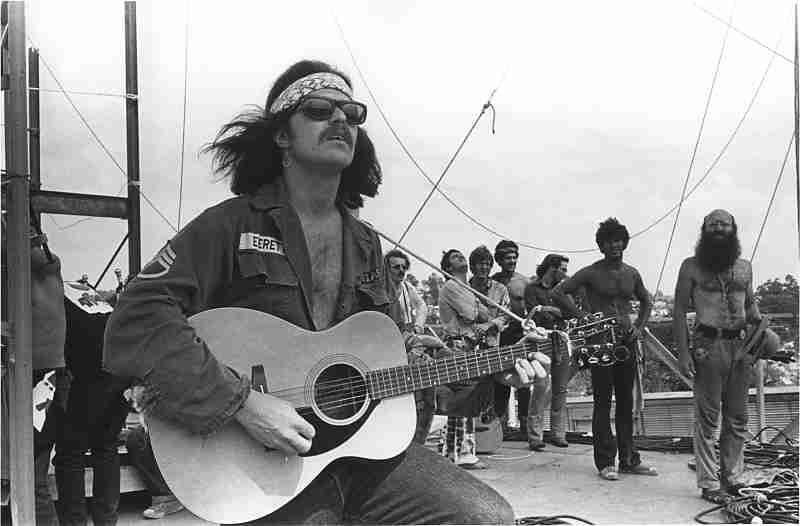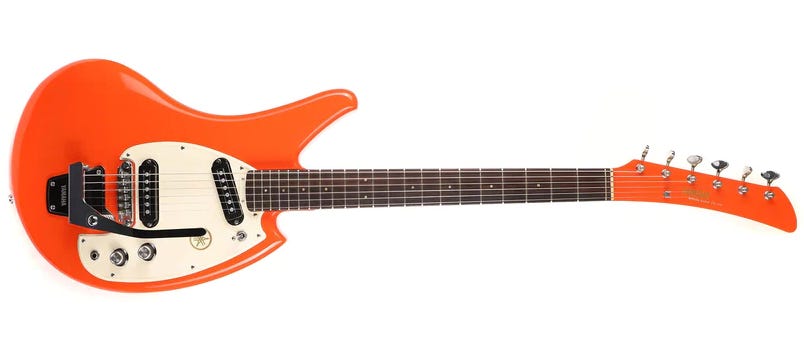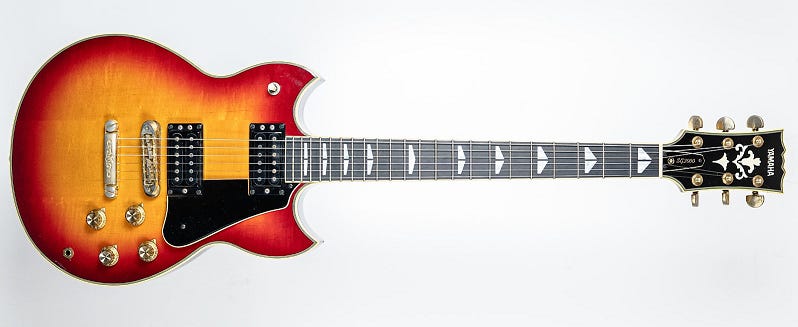Guitar Gavel Gear Of The Week with Will Ray - 1978 Gibson L6-S
Will's tips:
1) To find a great deal on a guitar, look for one that has had some serious issues, but repaired professionally. The integrity of the guitar will not be compromised if done correctly.
2) Use label tape and write pertinent information about the guitar and attach to the back of the headstock so you can remember. Any mods, price paid, year of the guitar, etc.
3) Strings can last a long time :-)
In 1887, twenty-six-year-old Torakusa Yamaha of Hamamatsu, Japan built his first reed organ by hand and the beginnings of Nippon Gakki (Yamaha Corporation) was born. Incorporated in 1897, Yamaha remains headquartered in Hamamatsu which has become a mecca of modern musical instrument manufacturing. Kawai, Tokai, Suzuki musical instruments, and Roland all have their corporate offices in Hamamatsu.
The electric guitar explosion followed Beatlemania, beginning with the first chord played by The Beatles on the Ed Sullivan Show in 1964. Like many other guitar manufacturers until that time, Yamaha was only producing classical guitars, none of which were exported. At breakneck speed, Yamaha innovated and tooled-up production of steel string acoustics, semi-hollow and solid body electrics, bass guitars, and amplifiers. The flood gates were opened with Yamaha’s 1966 catalog and the company has been the most underrated guitar manufacturer ever since.
In terms of U.S. distribution, the first guitars to arrive were part of Yamaha’s FG series of acoustics in 1968. A taste of virality occurred when Country Joe McDonald played a Yamaha FG-150 at Woodstock. The story goes he was basically forced on stage to fill some time after Richie Havens finished his set. After McDonald gave several excuses not to go on, someone handed him a FG-150 with a piece of rigging rope as a strap and the rest is history.
In terms of electric guitars, Yamaha had some wild designs back then such as the Flying Samurai and Flying Banana, neither of which were exported to the U.S.
The first electric guitar to land stateside was the humble SG-30, and not until 1973. Through the course of time Yamaha released numerous versions of this style SG with incremental body shape changes through the years. To paint the picture here’s a few model numbers for the symmetrical double cut SG: 50, 70, 90, 175, 500, 700, 1000, 1300, 1500, and it keeps going. The SG-30 below is the earliest iteration of what would quickly be made famous by Carlos Santana in 1976, the SG-2000. Even the modern day Revstar has a lot in common with the SG’s of the 70s.
Now that the condensed historical stage has been set for Yamaha’s earliest guitars, let’s take a look at a rather unknown species that debuted in 1968, the SA-15 and SA-15D. The SA series was Yamaha’s earliest hollow body guitars (no center block) and SA stands for “Super Axe”. The first one was the SA-5 in 1966, followed by it’s 12-string counterpart SA-20, and before the decade was over the SA-30 and SA-50. All of those models were essentially Yamaha’s version of a Gibson ES-335, but not the SA-15/15D, it stood out from the pack.
Guitar historians try to box this one into several boxes :-). Is it a nod to Rickenbacker with the hybrid cat’s eye f-hole, pickguard, and checkered body binding? The Ventures were bigger than The Beatles in Japan and Mosrite influences are heavy in Japanese guitars from the late 1960s. Is the elongated treble horn a lean into a Mosrite Ventures guitar? Or is the treble horn a play on the Flying Samurai? No matter which way you skin the cat, this guitar is different than all others.
The SA-15D was the fancier of the two and sports checkered body binding and side-fret position markers. Minus those appropriations the SA-15 is the same. Pickups are mini-humbuckers and this guitar is light, weighing approximately 6 lbs. It was offered in sunburst, maroon, and black and built from a laminated maple or mahogany body with a bolt-on maple neck. The controls are mounted to a raised pickguard, not uncommon for a jazzy guitar, but the spacers in between the guitar body and pickguard are known to deteriorate.
The length of production for the SA-15/15D is a mystery, perhaps a year or two, or at most four years making the last possible year of production 1972. Since it’s a Yamaha, therefore underrated in most circles, you can pick one up in good condition for around or less than $1,000 depending on the model.
Yamaha SA-15D specs:
Laminated maple or mahogany body, maple neck, rosewood fretboard, zero fret, open chrome tuners, Yamaha mini humbuckers, two volume and tone controls, 3-way switch, 24.75” scale length, 1.75” body depth.
Guitar Gavel Lick Of The Week with Keith Amyx - Open string technique in D
Keith throws a little bit of everything in this smooth lick, articulated brilliantly. Experiment with the timing, dynamics, and speed to give it your own unique voice. Tab is at the end of the video.











2 comments
Thanks Christopher, glad you enjoyed it!
Very interesting article!